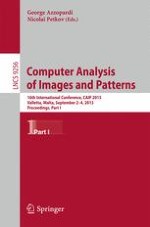2015 | Buch
Computer Analysis of Images and Patterns
16th International Conference, CAIP 2015, Valletta, Malta, September 2-4, 2015 Proceedings, Part I
herausgegeben von: George Azzopardi, Nicolai Petkov
Verlag: Springer International Publishing
Buchreihe : Lecture Notes in Computer Science
